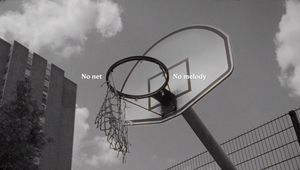
Unleashing Unreal Engine’s Horsepower for Michelin’s Shapeshifting Spot

When tyre manufacturer Michelin came to its agency BETC Paris with the brief to demonstrate how versatile its tyres were for both conventional and electric vehicles, the BETC team had an ambitious idea. They would showcase this range of vehicles driving along a road, transforming from one into the next in a continuous sequence through a range of locations.
Shooting real cars and trucks in real locations would have been near impossible. And conventional CG methods would have been expensive and time-consuming. But working with Prose On Pixels and director Miles Cable, the team were able to cut the timeframe and budget using Unreal Engine.
The result is a slick, impressive film that wouldn’t have been possible within the limitations of traditional techniques. LBB spoke to Julien Deschamps, creative director, and Jean-Baptiste Soumier, creative, at BETC Paris to find out how they managed it.
LBB> What was the brief?
BETC> Michelin, the leading tyre manufacturer, wanted to extend its leading position to electric vehicles, a very buoyant sector.
Unlike other tyre manufacturers who design tyres specifically for electric vehicles, Michelin uses the same tyres and wants to educate consumers about the fact that there is no need for special tyres for electric vehicles with Michelin tyres because each of their tyres is naturally adapted to electric vehicles.
Electric vehicles are much more demanding than combustion vehicles and this has an impact on the tyre. In particular, they are heavier because of the battery. And that has an impact on the tyre, it damages it. So electric vehicles need strong tyres that can cope with these kinds of demands. And this is the case with all Michelin tyres, thanks to their performance and innovation.
It's this message that we had to translate creatively, in an interesting and innovative way, given that it's the DNA of the Michelin brand.
LBB> What was your response to the brief?
BETC> On the basis of this brief, given that these are not specific tyres but tyres that go with all types of cars, we thought it would be interesting to do a sequence shot where we show all sorts of cars using Michelin technologies to make it clear that electric vehicles represent all these vehicles.
We were keen on this concept of a shot sequence and transitioning between all the vehicles so that there was no cut and so that there was a unity of time and place.
It just goes to show that Michelin has a proven track record on all types of vehicle, from urban and classic cars to racing supercars and heavy goods vehicles.
Each vehicle represents one of the challenges that Michelin tyres overcome: weight for heavy vehicles, acceleration for racing cars, etc.
LBB> How did you come up with this production solution?
BETC> When we wrote the script, we knew we were way over budget. To be able to present the idea to the client, we had to think about production solutions. We thought it was impossible because we had neither the budget nor the time to produce it. Then we discovered a director, Miles Cable, who uses Unreal Engine in his films. We mentioned it to the production team and they got in touch with him.
This film uses a lot of Unreal Engine and a little bit of 3D, particularly for the morphs and transitions, which are done externally and then reintegrated. Unreal Engine was initially a video game engine. So it is used to program environments and movements used in video games. As a result, there's a database of objects, cars, buildings and textures that's absolutely insane. All you have to do is use it, repurpose it and make it your own. And that saves an enormous amount of drawing time.
Working with Miles and his team was like working with a traditional director. Prose on Pixels took care of the framing and accompanied us throughout the production.
Miles Cable is a live action director who usually works with real cars and real roads, and he's taken to Unreal Engine. So he's got the vision of a real director, he does mega-cinematic stuff and on top of that he's mastered a very new tool. This project wouldn't have been possible without Unreal Engine.
LBB> What was the reaction from the client?
BETC> This campaign was relatively easy. We came up with a single creative idea. Then we came up with a single production solution, which was accepted quite quickly. The clients were very happy to use something new. There's a relationship of trust that we have with them that helps a lot. They were delighted that we had found a solution that was different, innovative, on budget and on time.
With Michelin, we taught them about the tool we were working with. We explained how the process would work (using making-of footage from previous Miles Cable projects) and how it would be different from a traditional film. And it means working together every day, hand in hand. More so than in a traditional production.
LBB> Do you see Unreal Engine as the future of advertising?
BETC> The tool is free. You buy licences for types of architecture, roads and textures to recreate the city. You can make the sun move, and the physical movements as you like. It really is a universe over which you have total control: of the light, the colours, the camera. You have absolute control over your movements.
If there were humans, we'd have had to integrate tracking. Unreal doesn't handle humans. If we did macro, there'd be something wrong with the textures. It's not 100% realistic. Particularly in the movement of passing vehicles and leaves. It is still a bit unreal, if I may.
LBB> What were the differences compared to a traditional production?
BETC> The big change compared to a 100% 3D production is that you get high quality renderings very quickly. You don't have that modelling drawing phase, where you see flat areas of grey that you can't see yourself in. Instead, you reassure the client straight away with renderings where you can see what you're going to see. It's a slightly lower level of definition in terms of pixels. But it bypasses all the modelling that's a bit fuzzy. The client doesn't need to imagine the results and can judge something that looks like the final phase and make micro-revisions. During the various stages of the process, we work as if we were working in animation (as opposed to live action).
For us, it's almost heavier than a traditional production. Usually, you prepare the thing, you brief the director, and you have an internal/external PPM. But this is an ongoing thing. We had weekly briefings with the clients. We had Miles on the phone every other day. You save production time but for the creative people it's a lot of time. It's the same when you work with AI. It's not magic. It took less time and cost less than if we'd done full 3D.















